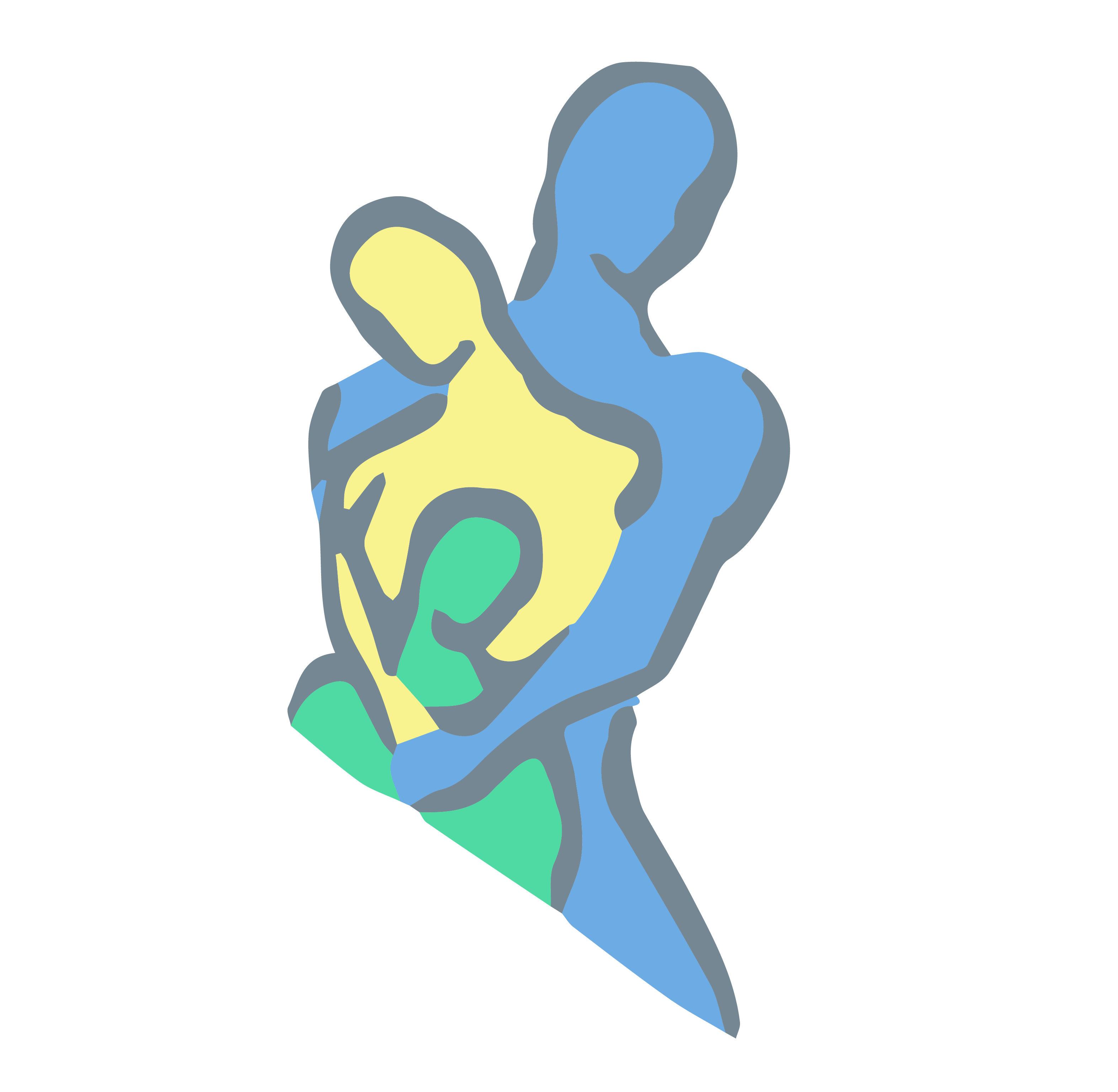ATTENTION DEFICIT HYPERACTIVITY DISORDER
This article was written by Joel Alcantara, D.C.
ADHD – attention deficit hyperactivity disorder. Of late, the disorder has been addressed a great deal in both the popular media and the scientific literature; particularly with the great number of children being diagnosed with the disorder and even more alarmingly by the type and amount of medication given to treat the condition.
The amount of information on the topic of ADHD is enormous, both in the scientific literature and the popular media such as newspapers and the Internet. For the pediatric chiropractor, attitudes towards the diagnosis and treatment of children with a diagnosis of ADHD runs counter to accepted medical practice to say the least. It is from this perspective that I address the topic.
HISTORY OF ADHD

The original clinical description of ADHD is usually attributed to George Still, who in 1902 described 43 children with characteristics of aggression, defiance, emotionality, disinhibition, limited sustained inattention, and deficient rule governing behavior. Still hypothesized that the central feature of this disorder was a “defect in moral control”. Still also noted that this disorder could occur in individuals with or without cognitive deficiency and with or without known neurologic disorders. He considered it a deficiency of sustained attention.
In the first half of the 20th century, the disorder was examined based on its relationship to insults to the brain, including infections, toxins and head trauma. It was noted that the characteristics were similar to animal and human findings with characteristics resulting from damage to the frontal lobes of the brain. Hence, the term “minimal brain damaged” was coined and later to “minimal brain dysfunction” to reflect the finding that no known damage could be found.
Hyperactivity became a central focus of etiology and diagnosis in the 1950’s with the term “hyperkinetic reaction of childhood” was coined. Interestingly enough, its been known since the 1930’s that stimulant medication improved symptoms but its widespread use did not gain popularity until the 1960’s.
In the 1970’s, the central role was placed on the deficit of sustained attention and the term “attention deficit disorder” was coined. In the 1980’s, the focus on “inattention” came into question and that the deficit may be the processing between the incoming information to the brain and the response that is generated, whether appropriate or inappropriate (1,2).
EPIDEMIOLOGY OF ADHD
Prevalence studies have been performed as early as the 1960’s and 1970’s (before diagnostic criteria were established) and yielded prevalence rates of 5%-10% of elementary school-aged children with characteristic of “hyperkinesis syndrome” or “hyperactivity” (3,4).
In the 1980s, the Psychiatric Association published the criteria for what would be eventually called attention deficit/hyperactivity disorder (5). Based on established diagnostic criteria, prevalence rates fall between 4% – 12% in the 6-12 year-old age group.
A recent publication by Barbaresi et.al. (6) found the highest estimate of the cumulative incidence at age 19 years (with 95% confidence interval) of AD/HD (definite plus probable plus questionable AD/HD) was 16.0% . The lowest estimate (definite AD/HD only) was 7.4%.
Based on these and other reports, ADHD is perhaps one of the most common psychiatric diagnosis for children less than 18 years of age (7). One may wonder as to the varying figures in these prevalence studies. This question highlights the first controversy of ADHD that will be addressed. That of the diagnosis (or misdiagnosis) of children with ADHD.

DIAGNOSIS OF ADHD
In recent times, the diagnostic criteria for ADHD have undergone refinement and changes. The diagnostic criteria for ADHD are shown in Table 1 (5). As you read the diagnostic criteria, ask yourself if you, a child you know, a friend or a relative, would fit the diagnosis of ADHD. It is well accepted that the characteristics associated with a diagnosis of ADHD occurs along a continuum. Certainty in the diagnosis of ADHD has many pitfalls due to the day-to-day variabilility in most children. The stringency with which a clinician applies the diagnostic criteria in making a diagnosis is a factor, and unlike other clinical conditions, evaluating the behavior associated with ADHD is completely subjective.
ADHD is diagnosed based on a cluster of behaviors with no biological markers. As Wender (8) commented, “The published diagnostic criteria lend an aura of objectivity to the diagnosis, but the application of these criteria is based on subjective judgments regarding the accuracy of information given by parents and teachers.
This is the nature of psychiatric disorders, including ADHD. Only when, and if, biological markers can be found to identify the condition will this subjectivity be eliminated.” When one considers the differential diagnosis associated with a child’s inattention, impulsivity and high level of activity, there bounds to be abuse or misuse with the diagnostic criteria (9).
A. Either (1) or (2):
1) Six (or more) of the following symptoms of inattention have persisted for at least six months to a degree that is maladaptive and inconsistent with developmental level:
Inattention:
- Often fails to give close attention to details or makes careless mistakes in schoolwork, work, or other activities
- Often has difficulty sustaining attention in tasks or play activities
- Often does not seem to listen when spoken to directly
- Often does not follow through on instructions and fails to finish schoolwork, chores, or duties in the workplace (not due to oppositional behavior or failure to understand instructions.
- Often has difficulty organizing tasks and activities
- Often avoids, dislikes, or is reluctant to engage in tasks that require sustained mental effort (such as schoolwork or homework)
- Often loses things necessary for tasks or activities (for example, toys, school assignments, pencils, books, or tools)
- Is often easily distracted by extraneous stimuli
- Is often forgetful in daily activities
2) Six (or more) of the following symptoms of hyperactivity-impulsivity have persisted for at least six months to a degree that is maladaptive and inconsistent with developmental level:
Hyperactivity:
- Often fidgets with hands or feet or squirms in seat
- Often leaves seat in classroom or in other situations in which remaining seated is expected
- Often runs about or climbs excessively in situations it is inappropriate (in adolescents or adults, may be limited to subjective feelings of restlessness)
- Often has difficulty playing or engaging in leisure activities quietly
- Is often “on the go” or often acts as if “driven by a motor”
- Often talks excessively
Impulsivity:
- Often blurts out answers before questions have been completed
- Often has difficulty awaiting turn
- Often interrupts or intrudes on others (for example, butts into conversations or games)
B. Some hyperactive-impulsive or inattentive symptoms that caused impairment were present before age 7 years
C. Some impairment from the symptoms is present in two or more settings (for example, at school (or work) and at home)
D. There must be clear evidence of clinically significant impairment in social, academic, or occupational functioning
E. The symptoms do not occur exclusively during the course of pervasive developmental disorder, schizophrenia, or other psychotic disorder and are not better accounted for by another mental disorder (for example, mood disorder, anxiety disorder, dissociative disorder, or a personality disorder)
MEDICAL APPROACHES TO ADHD
Although there are several medical approaches to the treatment of patients with ADHD (i.e., behavioral modification, alternative therapies, etc.), methylphenidate (Ritalin) is the medication that is almost universally prescribed for children with ADHD, while selective serotnin reuptake inhibitors (SSRIs) is gaining widespread popularity. Ritalin is a central nervous system stimulant that affects the core behavioral features of ADHD; namely, age-inappropriate levels of inattention, impulsivity and hyperactivity. It has effects similar to both amphetamines and cocaine.
Ritalin is a schedule II controlled substance, and both its production and distribution are tightly controlled. Concerns about possible over-diagnosis and over-treatment of children with ADHD have been prominent in media reports, as have various competing claims about the safety and efficacy of the various treatments.
A study by Zito et.al. (10) published in the Journal of the American Association indicated that psychotropic medication increased dramatically between 1991-1995, with a great number of the medications being “off-label.” “Off-label” is a term used to describe a medical doctor’s drug prescription for a condition wherein the drug is not specifically approved for it. Children are most likely to be treated with “off label” medication. Ironically, the warning label on Ritalin states, “Ritalin should not be used in children under six years, since safety and efficacy in this age group have not been established.” Last year, doctors estimated that 70 percent to 80 percent of drugs used on children had not been tested in children.
In 1999, 9.9 million U.S. prescriptions were written for Ritalin. Non-medical illicit use resulted in 1,478 hospital emergencies during the year. White and Yadao (11)investigated the frequency, risk, symptoms and outcome in the use of Ritalin reported to a regional poison control center. Of 289 patients, methylphenidate exposure was associated with symptom development is 31% of the cases, particularly in the 6-11 year old age group. Common symptoms reported were tachycardia, agitation, lethargy or a combination thereof.
Signs of Ritalin overdose include the following(12):
- Agitation
- severe confusion
- convulsions or seizures
- dryness of mouth or mucous membranes
- false sense of well-being
- fast, pounding, or irregular heartbeat
- fever
- severe headaches
- increased blood pressure
- increased sweating
- large pupils
- muscle twitching
- overactive relaxes
- seeing, hearing, or feeling things that are not there
- trembling or tremors
- vomiting
In a very recent publication, Rappley et.al. (13) identified patterns of diagnosis and treatment of ADHD in 223 very young children enrolled in the Michigan Medicaid program. What they found was alarming to say the least. In children 3 years or younger with diagnosed ADHD, psychotropic medication use was markedly variable based on little or no clinical guidelines. Twenty two different psychotropic medications were used. In addition, these children had comorbidities (i.e., other health conditions and injuries) and based on the study authors’ comments, “attest to these children’s vulnerability.”
A meta-analysis by Schachter et.al. (14) examined the efficacy and safety of short acting methylphenidate in children and adolescents with ADHD. Of the 62 randomized trials examined, the following interpretations were made. One, there was substantial publication bias such that the studies demonstrating no effect of methylphenidate or when it fared less well than placebo, “may not have been published.” Second, adverse events to the medication were underreported. Third, the effects of methylphenidate beyond 4 weeks was found questionable, particularly with the lack of long term studies. As the study authors noted, “Collectively, these observations reflect a less-than-ideal state of affairs given the long history of extensive, and ever increasing, use of methylphenidate for ADD, particularly in North America for groups that now include preschoolers and adults.”
Concern about Ritalin use in the school systems throughout the country is such that the Texas Board of Education adopted a resolution that schools consider non-medical solutions to behavior problems. The Colorado School Board has approved a similar resolution. In Connecticut, the Legislature approved unanimously (and signed by Gov. John G. Rowlands) to prohibit teachers, counselors and other school officials from recommending psychiatric drugs for any child. Other states are following suit (15)

ALTERNATIVE THERAPIES

Within the last decade, complementary and alternative medicine ( CAM) have been a focus of interest and discussion in the popular media (including the internet) and in funded research in the scientific community. Parents of children with ADHD actively seek out “alternative” treatments due to concerns of the risks of their children being given powerful psychoctive medications over an indeterminable and prolonged period of time.
A recent review paper by Chan (16) examined the epidemiology of CAM use for ADHD. Using the CAM conceptual model of a therapeutic wheel by Kemper, Chan examines the various alternative approaches to the care of the child with a diagnosis of ADHD.
Biochemical therapies include herbal remedies, vitamins and nutritional supplements. Lifestyle/Mind-Body therapies include exercise, nutrition, environmental changes and mind body techniques such as hypnosis, psychotherapy and biofeedback.
Bioenergetic therapies include acupuncture, therapeutic touch, prayer and homeopathy. These therapies are based on the notion that they restore harmonious balance of an invisible energy or spirit that surrounds and flows through the body.
Biomechanical therapies include surgery, massage and “spinal manipulation” (including chiropractic).” According to Chan, very few studies of children in ADHD exists. And she’s right. Furthermore, Chan admonishes the aggressive and widespread alternative therapies advertised as “miracle cures” for ADHD in the lay press and Internet. For your interest, I have provided in the newsletter reference section (see below), articles and websites that Dr. Chan has listed as resources for CAM and ADHD. To empower you with addressing questions from parents and medical doctors alike, you should be aware of these websites and be able to address the issues involved.
THE CHIROPRACTIC PERSPECTIVE
Recent research efforts are now bringing into fruition supporting evidence upon the chiropractic principle of the supremacy of the nervous system. ADHD is a central nervous system disorder Attempts at understanding the underlying neurobiology of ADHD remains a challenge.
In chiropractic, to the best of my knowledge, the first and only documentation in the scientific literature addressing the effects of chiropractic care in children with hyperactivity was performed by Giesen et.al. (17). The principle aim of their study was to determine the effectiveness of chiropractic manipulative therapy in the treatment of children with hyperactivity. Using blinds between investigators and a single subject research design, the investigators evaluated the effectiveness of the treatment for reducing activity levels of hyperactive children. Data collection included independent evaluations of behavior using a unique wrist-watch type device to mechanically measure activity while the children completed tasks simulating school-work. Further evaluations included electrodermal tests to measure autonomic nervous system activity. Chiropractic clinical evaluations to measure improvement in spinal biomechanics were also completed. Placebo care was given prior to chiropractic intervention. Data were analyzed visually and using nonparametric statistical methods. Five of seven children showed improvement in mean behavioral scores from placebo care to treatment. Four of seven showed improvement in arousal levels, and the improvement in the group as a whole was highly significant. Agreement between tests was also high in this study. For all seven children, three of the four principal tests used to detect improvement were in agreement either positively or negatively (parent ratings of activity, motion recorder scores, electrodermal measures, and X-rays of spinal distortions). While the behavioral improvement taken alone can only be considered suggestive, the strong interest agreement can be taken as more impressive evidence that the majority of the children in this study did, in fact, improve under specific chiropractic care. The results of this study, then, are not conclusive. However, they do suggest that chiropractic care has the potential to become an important non-drug intervention for children with hyperactivity. Further investigation in this area is certainly warranted.
Considering that all of the alternative therapies as described by above are incorporated in a number of chiropractic practices or at least networked into by most, it is my contention that chiropractic provides the best “alternative” for children with a diagnosis of ADHD.
References & additional resources available on-line at:


